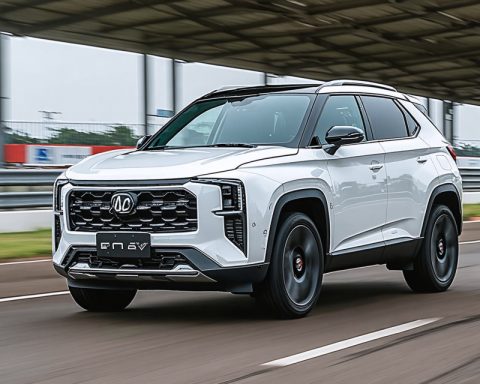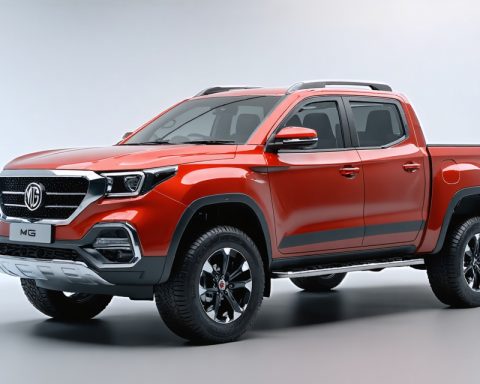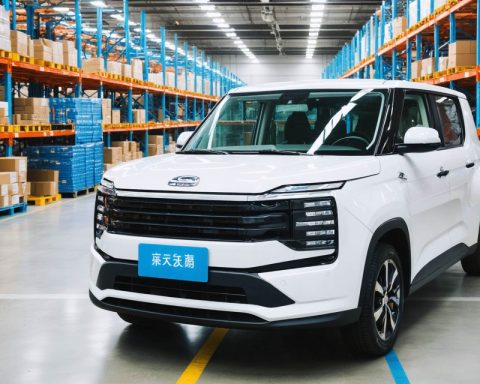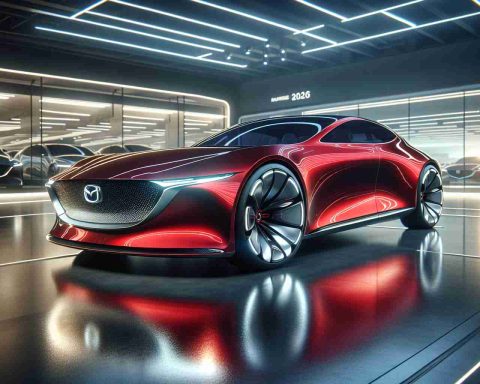- The Ford Ranger dominated as the best-selling vehicle in Australia for March, with 4,932 registrations, overtaking the Toyota RAV4.
- The BYD Shark 6, a plug-in hybrid, impressively secured the sixth position, bolstered by strategic pricing and the deadline of the Fringe Benefits Tax (FBT) exemption.
- Traditional models like the Toyota Hilux, Mitsubishi Outlander, and Toyota Prado maintained strong sales figures, highlighting consumer loyalty to reliability.
- EV sales, excluding key brands like Tesla, declined by over 51%, indicating tepid demand beyond early adopters.
- A total of 108,606 vehicles sold in March reflects a market slightly contracting yet sees Toyota boasting over 20,500 sales amid this trend.
- Industry leaders remain optimistic, predicting the market could exceed 1.1 million sales by year-end if current trends continue.
March proved to be a monumental month in the Australian automotive landscape, with a flurry of activity that reshuffled the leaderboard of best-selling vehicles. The Ford Ranger roared to the top, capturing the spotlight with 4,932 new registrations. This robust performance edged it past the steadfast Toyota RAV4, which clinched the second spot with 621 fewer units.
Yet, the true revelation came in the form of the BYD Shark 6. This plug-in hybrid vehicle didn’t merely sneak into the top ten; it made a statement, securing the sixth position with 2,810 deliveries. Its ascension was no mere happenstance. With competitively sharp pricing and an urgent consumer rush to seize the now-expired Fringe Benefits Tax (FBT) exemption for plug-in hybrids, the Shark 6 exemplifies the evolving dynamics of consumer priorities amidst economic incentives.
But this isn’t just a story of outliers. It’s a tapestry woven with the consistent threads of the Toyota Hilux, Mitsubishi Outlander, and Toyota Prado, each sustaining their dominance in the national consciousness. The collective sales figures reflect a market lusting for familiarity and reliability, even as glimpses of innovation spark curiosity.
In this changing landscape, vehicle preferences hint at broader narratives. Petrol and diesel vehicles, traditional giants, experienced mild stagnation. Electric vehicles (EVs), despite increased availability, saw a more than 51% decline in sales compared to last year, excluding notable brands like Tesla and Polestar. The allure of EVs hasn’t yet reached the mainstream Australian car buyer, a fact underscored by industry leaders attributing the stall to tepid demand post early-adopter enthusiasm.
The data paints a vivid picture: a total of 108,606 vehicles rolled off dealer lots in March, just shy of last year’s benchmark. Toyota, a stalwart of the Australian market, sold over 20,500 vehicles, showcasing growth amidst a contracting market. Prognostications from industry executives suggest optimism, forecasting a potential breach of 1.1 million sales by year-end, provided the current trends sustain their momentum.
This month’s automotive narrative is not just a snapshot of numbers but a reflection of market forces, consumer behavior, and shifting paradigms. The takeaway is clear: while traditional preferences hold strong, new players and changing regulations are making indelible marks. For consumers and industry players alike, the landscape is both familiar yet constantly evolving, presenting a challenge and an opportunity in equal measure.
How the BYD Shark 6 Reshaped Australia’s Automotive Market
Surge of the BYD Shark 6 and Its Implications
March was transformative for the Australian automotive market, with surprising shifts in car sales ranks. The most notable development was the Ford Ranger’s surge to the top, with 4,932 new registrations, effectively outpacing the previously dominant Toyota RAV4. However, one of the most intriguing developments was the rise of the BYD Shark 6, a plug-in hybrid that broke into the top ten best-selling vehicles at the sixth position.
BYD Shark 6’s Success Factors:
– Competitive Pricing: The BYD Shark 6 enters the market at a price point that undercuts many competitors, making it an attractive option for budget-conscious drivers interested in hybrid technology.
– Fringe Benefits Tax (FBT) Incentives: A rush to capitalize on the now-expired FBT exemption for plug-in hybrids fueled sales as consumers sought to benefit from financial incentives.
Key Questions for Consumers
Why Choose a Plug-in Hybrid?
– Environmental Impact: Plug-in hybrids, like the BYD Shark 6, offer a middle ground between traditional internal combustion engines and fully electric vehicles. They produce fewer emissions and lower fuel costs over time.
– Range Anxiety Solution: By combining electric power with a petrol engine, plug-in hybrids alleviate concerns about limited range and charging infrastructure.
What about Electric Vehicles (EVs)?
– Despite increased EV availability, such vehicles saw a 51% decline in sales compared to the previous year, excluding leaders like Tesla and Polestar. Many Australian consumers still prefer petrol and diesel options, largely due to concerns about range and infrastructure.
Industry Trends and Predictions
– Toyota’s Continued Dominance: With over 20,500 sales, Toyota remains a vital player, showcasing adaptability amid changing consumer preferences and economic conditions. The Toyota Hilux, Mitsubishi Outlander, and Toyota Prado continue to enjoy strong sales.
– Potential Growth: Industry experts project that Australia could see over 1.1 million vehicle sales by year-end, assuming current sales momentum continues.
Pros and Cons Overview
Pros of Gasoline and Diesel:
– Established Infrastructure: Widespread refueling stations and service centers.
– Proven Performance: Strong track records for reliability and performance.
Cons of Gasoline and Diesel:
– Environmental Concerns: Higher emissions contribute to pollution and environmental damage.
Pros of EVs and Hybrids:
– Lower Emissions: More environmentally friendly with fewer emissions.
– Cost Efficiency: Reduced fuel costs in the long run.
Cons of EVs and Hybrids:
– Higher Initial Cost: Often more expensive upfront compared to traditional vehicles.
– Limited Infrastructure: EVs require a robust charging network, which is still developing in many areas.
Actionable Tips
– Evaluate Incentives: Always check for current government incentives for buying hybrids or EVs, as these can significantly reduce overall costs.
– Test Drive Options: Consider test-driving both conventional and hybrid vehicles to see which suits your driving needs best.
– Monitor Market Trends: Keep an eye on the market for updates on new models and emerging technologies.
For further insights into the automotive industry and consumer guides, consider exploring Toyota and BYD for the latest models and innovations.



















